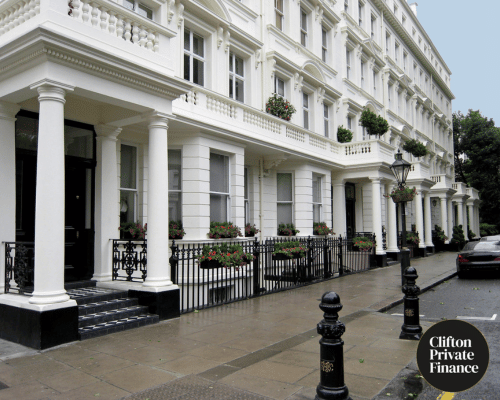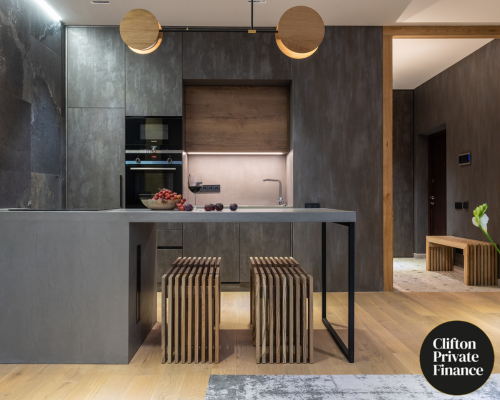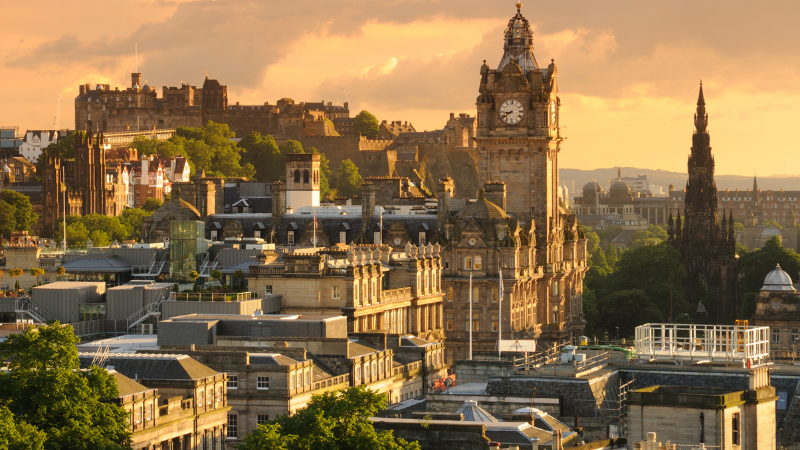Categories
RESEARCH: Gardens and Property Prices | What the Data Says
New research reveals surprising patterns in access to gardens across UK cities, with affordability linked to more green space.
Research from Clifton Private Finance has analysed data from Rightmove to calculate the percentage of homes for sale with gardens in the UK's cities. The results were surprising, with many of the UK’s more affordable cities ranking highest for access to a garden.
How Gardens Affect Property Prices
The most significant correlation in this data was that areas with more affordable homes were consistently more likely to have gardens than less affordable areas. There wasn’t necessarily a link to the overall population, as some towns and the rural regions performed equally as poorly in providing homes with green spaces, and a number of large cities did have ample access to homes with gardens. However, it is likely linked to the economic performance of the town or city and the nature of its workforce.
Southern England, on the other hand, had the highest concentration of homes without a garden and property values about the natural average. But this doesn’t necessarily mean that residents in Southern England are unhappy.
According to the 2024 Vitality report, the top five best areas in the UK for wellbeing and quality of life were in and around London or the Southeast. This shows that while having a garden is a privilege that can greatly contribute to well-being, it’s trumped by proximity to a strong economy and larger green spaces like parks and nature reserves.
Despite urban densification, over 50 of 67 UK areas analyzed had more than a 70% chance of homes with gardens, showing good access to green spaces.
With this information in mind, a natural conclusion could be that large cities are typically more costly and densely populated, making gardens less of a priority when building housing.
Well, not quite.
In fact, Nottingham is among the country’s largest cities, with a population of just over 800,000. Despite this, 82% of homes in the city have gardens. Furthermore, it’s one of the more affordable cities in the UK to buy a home, with an average price of £258,138.
Leicester has a population just north of 566,000 and is considered one of the biggest cities in the UK. There’s an 84% chance of finding a home in a garden in Leicester, putting it in the top 10 on our report. The average price of a home in the city is £276,227.
Additionally, smaller cities like Portsmouth, York and Cambridge had some of the lowest chances of finding a home with a garden. The average property value in Cambridge is £592,947, but with just over a 72% chance of finding a home with a garden, it actually falls into the lowest 20 on the list.
While there have been concerns over the erosion of Britain’s greenbelt, 50 out of 67 areas had over a 70% likelihood of getting a home with a garden, which could show that we have more access to green spaces than previously thought.
Interestingly, while some would expect areas with more access to a garden to have a greater overall wellbeing compared to zones with limited outdoor space, this isn’t necessarily accurate. Cambridge, for example, despite its high cost of living and restricted access to garden spaces, ranked 6th for a favourable standard of living in this year’s Vitality Report, and Bath ranked number 7.
Average income and ample transport links to major cities certainly contribute to this, but both Cambridge and Bath are renowned for their access to parks and woodlands, which may compensate for the lack of garden space.
Similarly, most of Bath’s homes are historic George terraces, which make quite a charming backdrop that likely contributes to overall wellbeing. This can also be seen with Portsmouth, where its proximity to local beaches and the South Downs national parks likely plays more of a part in the fulfilment of its residents than access to a garden.
It’s worth noting that numerous cultural and historical influences have shaped the layout of modern British architecture.
During the Georgian and Victorian eras (18th and 19th centuries), urbanisation driven by the Industrial Revolution led to densely packed housing developments, particularly in cities like London, Manchester, and Birmingham.
Georgian townhouses were built for the growing middle class and aristocracy, often in uniform terraces with limited outdoor space. In contrast, Victorian homes, designed to accommodate the urban working class, were typically terraced and built close together, with minimal or no gardens.
Conversely, post-World War II, there was an emphasis on suburbanisation and the construction of new estates that prioritised larger plots of land, often with front and back gardens. In the 1950s to 1970s, garden ownership became more popular, likely influenced by limited access to parks and green spaces in more populated regions.
While homes with gardens are still common in suburban and rural areas, rising land prices and urban densification have made them less prevalent in city centres. However, they remain a sought-after feature for those seeking more space and a higher standard of living.
Top 5 Places to Live if You Want a Garden
90% of homes currently for sale in Doncaster have gardens, making it the best place in the UK to get a home with a garden. Wolverhampton, Wells, Hereford and Carlisle took the following spots as the top 5 best places to buy if you want access to a garden. 87-89% of properties in these areas have gardens.
Doncaster’s history spans from Roman origins to its industrial expansion in the 18th and 19th centuries, which left a lasting mark on the town. Victorian architecture further shaped the town, with terraced housing built to accommodate the growing industrial workforce. Suburban developments in the 20th century introduced a mix of semi-detached and detached homes with gardens, influenced by garden city principles. These sought to combine urban living with access to green spaces.
Worst 5 Places to Live if You Want a Garden
London is the worst city in the UK if you want to buy a home with a garden. Being a capital city with a dense population, this is no shock, but it certainly sets the tone for the rest of the data. After London, the places with the least chance of getting a home with a garden were Manchester, Aberdeen, Liverpool and Glasgow. These cities have a 50-61% chance of finding a garden property.
Central London is dominated by flats, terraced houses, and converted buildings where space is premium, leaving little room for private gardens. In response to urban pressures, many developments prioritise maximising living units over providing large outdoor areas. As a result, homes with gardens are more common in London’s outer boroughs and suburban areas, where land is more available and affordable.
Editor's Note
This report was completed using data found on Rightmove. In our research, we removed some data where the research pool was too small to compare to the larger datasets and doubles of metropolitan areas we have already included in the research, namely Salford, Westminster, St Asaph and St Davids. Further information can be found in the dataset itself.









